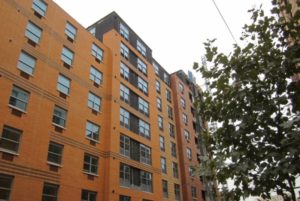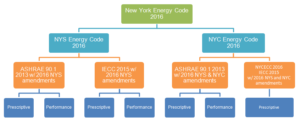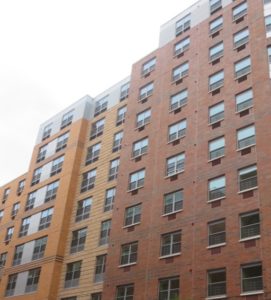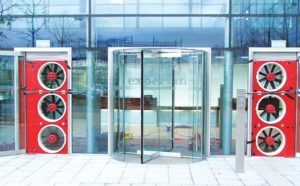- November 14, 2016
- 0 Comments
- In High-Performance Construction
- By Steven Winter Associates
It has now officially been over one month since the 2016 NYS energy code went into effect. In a recent blog post, we covered some of the significant changes for residential buildings in New York. In this post, we will explore the substantive changes made in the commercial code section, particularly with respect to envelope and air barrier requirements.
As a reminder, in this post, we are referring to retail, commercial, or larger than three-story R-2, R-3, or R-4 buildings. New York buildings can choose between one of two compliance pathways: ASHRAE 90.1 2013 or IECC 2015, by applying the appropriate state and city amendments. Prescriptive as well as performance options are available, depending on the chosen pathway.
This iteration of commercial energy code has seen some major changes, particularly in the envelope section. We’ve chosen to highlight some key modifications that will affect numerous projects in New York City. In particular, under 2016 NYCECC, through-wall mechanical penetrations that comprise at least 1% of the total above-grade wall area must now be accounted for in the building’s overall assembly.
These through-wall penetrations, like PTACs, must be assigned a default of U-0.50 (unless a manufacturer has evidence to the contrary), which is a significant penalty (quick conversion U-0.50 = R-2 = not particularly good). Accounting for this thermal bridge will make meeting energy code envelope requirements that much more challenging, especially those with the ubiquitous PTACs.
In addition, both ASHRAE 90.1-2013 and NYCECC 2016 have made prescriptive envelope assembly requirements much more stringent. For example, the prescriptive value for above-deck roof insulation is now R-30 continuous.
NYC energy code has also stepped up the game on air barrier requirements. Smaller buildings (less than 25,000 square feet) must either meet prescriptive requirements for continuous air barrier or successfully complete envelope pressure testing (read: blower door testing). Perhaps the most significant change is the required air barrier testing for buildings between 25,000 and 50,000 square feet and 75 feet in height or less. These buildings are now required to comply with blower door testing, with a maximum threshold of 0.40 CFM per square foot of enclosure, when tested at 75 Pascals. Similar to the residential energy code, this requirement must be met regardless of which compliance pathway has been chosen. As you can imagine, this is a giant leap towards quantifying the effectiveness of buildings’ air barrier and away from reliance on just visual inspections.
Larger buildings that are greater than 50,000 square feet must test or inspect each type of air barrier joint or seam. Again, this is a major change that highlights an important source of energy loss that has been mostly glossed over in previous energy code iterations.
Overall, the changes made in 2016 energy code have made great advancements in energy efficient envelope assemblies. In particular, large thermal bridges that had been previously ignored are now being accounted for. In addition, the new blower door testing requirements holds a subset of buildings accountable for energy loss through infiltration and allows for quantitative analysis of the building’s enclosure.
One wonders if the code is approaching the blower door testing requirements for LEED, ENERGY STAR, and Passive House certifications. Stay tuned for future posts as we will be breaking down the differences in these testing requirements and analyzing how the residential and commercial energy code stacks up in comparison. In addition, we will be discussing best practice strategies as well as innovative technologies to ensure a passing grade.
By Sunitha Sarveswaran, Energy Engineer




